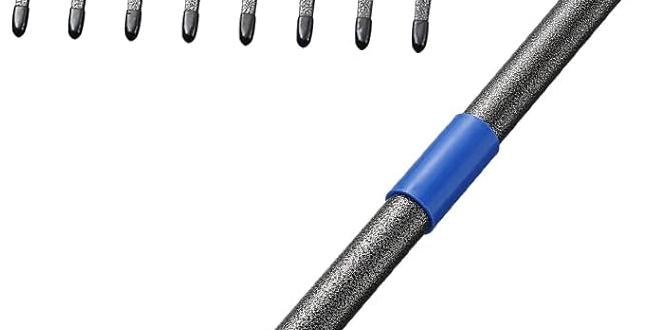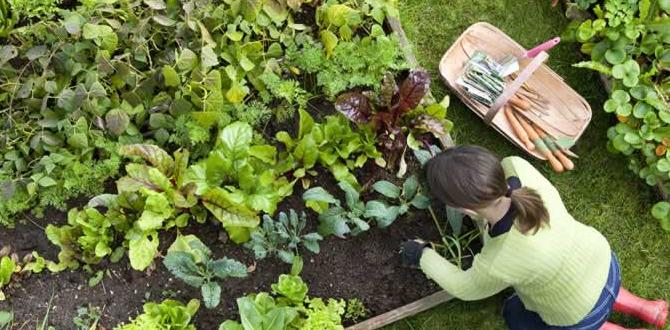Desert garden design is achievable for anyone! With the right plant choices, smart watering, and thoughtful layout, you can create a stunning, low-maintenance oasis that thrives in dry climates and conserves water.
Dreaming of a garden that’s beautiful, water-wise, and baja-chic? A desert garden might be your perfect answer! Many think of harsh, barren landscapes, but a desert garden is actually a vibrant, intentional design that celebrates plants adapted to arid conditions. It’s a fantastic way to embrace sustainability and create a garden that requires less water and fuss, even if you don’t live in a true desert. Don’t worry if you’re new to gardening; we’ll walk through everything you need to know to make your desert-inspired patch a blooming success. Get ready to transform your outdoor space into a stunning, resilient paradise!
Desert Garden Design: Proven & Essential Tips for Beginners
Creating a beautiful and functional desert garden is more about understanding the unique needs of arid-loving plants and mimicking their natural environment than it is about strict rules. It’s a garden that thrives on sunshine, minimal water, and a little bit of thoughtful planning. Whether you’re aiming for a full landscape overhaul or just a few stylish container accents, these tips will guide you.
Why Choose Desert Garden Design?
Switching to a desert garden design offers a host of benefits, especially for those looking to reduce their environmental impact and maintenance efforts.
- Water Conservation: This is the cornerstone of desert gardening. By selecting plants that naturally require little water, you drastically cut down on your garden’s thirst.
- Low Maintenance: Drought-tolerant plants are often tough cookies. They’re less prone to pests and diseases and don’t need constant pampering like fertilizing or frequent pruning.
- Unique Aesthetics: Cacti, succulents, and other desert plants offer striking shapes, textures, and colors that create a dramatic and modern look.
- Resilience: These plants are built to withstand heat and dry spells, making them incredibly forgiving for busy gardeners or those in hot climates.
- Supports Local Wildlife: Many native desert plants provide food and shelter for local pollinators like bees and butterflies, and birds.
Essential Elements of Desert Garden Design
A successful desert garden isn’t just about picking the right plants; it’s about creating an environment where they can truly flourish.
1. Smart Plant Selection: The Heart of Your Oasis
Choosing the right plants is the most critical step. Focus on species native to arid or semi-arid regions, or those widely recognized for their drought tolerance.
Native Plants are Your Best Friends
Using plants native to your specific region is always the most sustainable and successful approach. They are already adapted to your local climate, soil, and rainfall patterns. A great resource for finding native plants is the Calscape database if you’re in California, or search for “native plants [your state/region]” to find local resources.
Key Plant Categories to Consider:
- Cacti: From towering saguaros (in appropriate climates!) to prickly pear and hedgehog cacti, they offer bold structural elements.
- Succulents: Agaves, Echeverias, Sedums, and Aloes provide incredible texture, color, and diverse forms.
- Drought-Tolerant Shrubs: Consider plants like Salvias, Rosemary, Lavender, and Texas Sage (Leucophyllum frutescens) for structure and fragrance.
- Ornamental Grasses: Varieties like Blue Grama Grass or Muhly Grass add movement and soft texture.
- Desert Wildflowers: For seasonal color, look for plants like Desert Marigold, Apache Plume, or Verbena.
Plants to Approach with Caution (or Avoid):
Some lush, thirsty plants simply won’t thrive and will require excessive watering, defeating the purpose of a desert garden. These include many traditional bedding plants, ferns, and broad-leaved tropicals.
2. Mastering the Soil: Drainage is Key
Desert plants hate “wet feet.” Their roots need to dry out between waterings. This means excellent drainage is non-negotiable.
- Amend Existing Soil: If your soil is heavy clay, mix in coarse sand, gravel, or perlite to improve drainage. Avoid peat moss, which can hold too much moisture.
- Create Raised Beds: Building raised beds is an excellent way to control soil composition and ensure superior drainage.
- Gravel Mulch: A layer of gravel or decomposed granite is ideal for the surface. It helps regulate soil temperature, suppress weeds, and allows water to drain away quickly.
For a comprehensive guide on soil amendments, the New Mexico State University Extension offers excellent information on desert soil management.
3. Strategic Watering: Less is More
The goal is deep, infrequent watering rather than frequent, shallow sprinkles. This encourages plants to develop deep root systems, making them more resilient.
- Drip Irrigation or Soaker Hoses: These systems deliver water directly to the plant’s root zone, minimizing evaporation.
- Water Early or Late: Water in the early morning or late evening to reduce water loss due to heat.
- Observe Your Plants: Learn to read your plants’ signs. Wilting can indicate thirst, but also overwatering. Check soil moisture a few inches down before watering.
- Seasonal Adjustments: Water much less in cooler months when plants are dormant or experiencing natural rainfall.
4. Thoughtful Hardscaping and Layout
Hardscaping elements are crucial for defining spaces, providing contrast, and managing water.
- Pathways: Use gravel, decomposed granite, pavers, or flagstone to create attractive and functional pathways. These materials also absorb heat and can add textural interest.
- Dry Riverbeds: These are decorative channels filled with stones and gravel that mimic natural watercourses. They can help manage rainwater runoff and add a unique visual element.
- Rock Gardens: Incorporate boulders and smaller rocks. They not only complement desert plants but also help retain moisture in the soil and provide microclimates for smaller plants.
- Seating Areas: Incorporate simple seating areas made from natural materials to enjoy your desert oasis.
5. Mulching: The Unsung Hero
While organic mulches like wood chips can be used sparingly in certain desert garden styles, inorganic mulches are often preferred.
- Gravel and Rocks: As mentioned, these are ideal. They suppress weeds, prevent soil splashing on leaves, and keep roots cooler.
- Decomposed Granite (DG): A popular choice for pathways and ground cover, DG compacts nicely and offers a natural look.
Designing Your Desert Garden: Step-by-Step
Let’s translate these elements into a practical plan for your garden.
Step 1: Assess Your Site
Sunlight: Most desert plants need full sun. Observe how much direct sunlight your intended garden area receives throughout the day.
Space: How much area are you working with? This will dictate the scale of your design and the types of plants you can incorporate.
Existing Features: Note any existing structures, trees, or slopes.
Drainage: Dig a small hole and fill it with water. If it drains within a few hours, your drainage is good. If it takes much longer, you’ll need to amend the soil or consider raised beds.
Step 2: Create a Layout Plan
Sketch out your garden. Think about:
Focal Points: Where do you want the eye to be drawn? A striking sculpture, a large specimen plant, or a feature rock?
Plant Groupings: Group plants with similar water needs together. Consider their mature size and shape.
Pathways and Flow: How will you move through the garden? Ensure pathways are wide enough for comfortable passage.
Hardscaping Integration: Where will rocks, gravel, or decorative boulders be placed?
Step 3: Prepare the Soil
Clear the area of weeds and debris.
If amending, mix in your chosen drainage materials (sand, gravel, perlite) into the top 6-12 inches of soil. For new beds, you can also use a well-draining soil mix designed for xeriscaping.
If building raised beds, fill them with a suitable free-draining soil blend.
Step 4: Install Hardscaping
Lay out pathways.
Place any large rocks or boulders according to your plan.
Step 5: Select and Place Plants
Choose your plants based on your observations and design.
When placing plants, consider their mature size and growth habit. Don’t overcrowd them; allow for air circulation.
Dig holes that are about twice as wide as the plant’s root ball and just as deep.
Gently loosen any circling roots on the root ball before placing the plant in the ground.
Backfill with soil, pressing gently to remove air pockets.
Step 6: Mulch and Water
Apply a layer of your chosen inorganic mulch (gravel, decomposed granite) around the plants, keeping it a few inches away from the plant stems.
Water thoroughly after planting to help settle the soil and reduce transplant shock.
Key Considerations for Different Desert Garden Styles
The term “desert garden” is broad. Here are a few popular takes:
Xeriscaping
This is more of a landscaping philosophy than a strict style. It prioritizes water conservation through smart design, appropriate plant selection, efficient irrigation, and the use of mulch. It’s highly practical and can be adapted to many aesthetic preferences.
Cactus and Succulent Gardens
These are visually striking, offering bold shapes and textures. They often feature minimalist hardscaping, relying heavily on the sculptural qualities of cacti and succulents.
Native Desert Plant Gardens
Focusing on plants indigenous to your local area offers the most ecological benefits and requires the least intervention once established. This style often looks naturally integrated into the surrounding landscape.
Mediterranean-Inspired Desert Gardens
While not strictly “desert,” many Mediterranean plants are highly drought-tolerant and share a similar aesthetic to some desert species. Think lavender, rosemary, olive trees, and ornamental grasses.
Popular Desert Garden Plants and Their Needs
Here’s a look at some beginner-friendly plants that perform well and their basic requirements:
| Plant Type | Examples | Sun Needs | Water Needs | Soil Needs | Mature Size |
|---|---|---|---|---|---|
| Cacti | Prickly Pear (Opuntia spp.) | Full Sun | Very Low | Excellent Drainage | Varies widely (2-15 ft) |
| Hedgehog Cactus (Echinocereus spp.) | Full Sun | Very Low | Excellent Drainage | 1-3 ft | |
| Succulents | Agave (Agave spp.) | Full Sun to Part Shade | Very Low | Excellent Drainage | Varies widely (1-10+ ft across) |
| Echeveria (Echeveria spp.) | Full Sun to Bright Indirect Light | Low | Excellent Drainage (container often best) | 6-12 inches | |
| Sedum (Sedum spp.) | Full Sun | Low | Excellent Drainage | 4 inches – 2 ft | |
| Shrubs | Texas Sage (Leucophyllum frutescens) | Full Sun | Low | Well-drained | 3-8 ft |
| Rosemary (Rosmarinus officinalis) | Full Sun | Low to Moderate | Well-drained | 2-6 ft | |
| Ornamental Grasses | Blue Grama Grass (Bouteloua gracilis) | Full Sun | Low | Well-drained | 1-2 ft |
Tools You’ll Need for Your Desert Garden Project
You don’t need a lot of specialized gear, but a few key tools will make the job easier and safer.
- Shovel and Spade: For digging, soil amendment, and planting.
- Gardening Gloves: Essential, especially when handling cacti. Look for thick leather or puncture-resistant gloves.
- Trowel: For smaller planting jobs and working in tight spaces.
- Rake: For leveling soil and spreading mulch.
- Wheelbarrow: Invaluable for moving soil, amendments, rocks, and mulch.
- Watering Can or Hose with Sprayer: For initial watering and occasional deep watering. Drip irrigation system components are also very useful.
- Pruning Shears: For removing dead growth and shaping some plants.
- Safety Glasses: When working with gravel or breaking up tough soil.
Common Beginner Mistakes to Avoid
Even with the best intentions, new gardeners can stumble. Here are a few pitfalls to watch out for:
- Overwatering: This is the #1 killer of drought-tolerant plants. Always check soil moisture before watering.
- Poor Drainage: Planting in heavy, waterlogged soil will lead to root rot.
- Crowding Plants: Not allowing enough space for mature growth leads to poor air circulation and potential disease.
- Using the Wrong Mulch: Avoid thick layers of organic mulch right against fleshy plant stems; it can trap moisture and encourage rot.
- Ignoring Native Plants: While many non-natives do well, local natives are the most sustainable and resilient choice.
Frequently Asked Questions about Desert Garden Design
Q1: Can I create a desert garden in a non-desert climate?
Absolutely! The principles of desert garden design – especially water conservation and selecting drought-tolerant plants – are beneficial anywhere. You can choose plants that tolerate heat and dry spells, even if they aren’t strictly desert natives. Focus on good drainage and lower water use.
Q2: How often should I water my desert garden?
This is highly variable depending on your climate, the specific plants, and the season. Generally, water deeply once every 2-4 weeks during the hottest, driest periods. In cooler or wetter seasons, natural rainfall may be sufficient, and you might water only once every couple of months or not at all. Always check the soil moisture a few inches down before watering.
Q3: What kind of mulch is best for a desert garden?
Inorganic mulches like gravel, decomposed granite, pebbles, and crushed stone are excellent. They help keep roots cool, retain soil moisture (from watering), suppress weeds, and prevent soil splash. Organic mulches can be used sparingly, but avoid piling them directly against the base of plants.
Q4: Are desert gardens difficult to maintain?
Once established, desert gardens are typically very low-maintenance. They require less watering, infrequent fertilizing, and minimal pruning. The primary ongoing tasks involve occasional weeding and checking your irrigation system.
Q5: Will my desert garden look barren?
Not at all! Desert gardens can be incredibly diverse and visually stunning. They offer a unique palette of textures, shapes, and colors from succulents, cacti, ornamental grasses, and flowering desert plants. Strategic placement of rocks and hardscaping further enhances their beauty.
Q6: Can I grow vegetables in a desert garden?
Yes, but it requires careful planning. You’ll want to select heat- and drought-tolerant vegetable varieties and create microclimates for them, often with supplemental watering and some shade during the harshest parts of the day. Raised beds with amended soil are beneficial. Crops like certain beans, peppers, tomatoes (water-wise varieties), and herbs (rosemary, thyme, oregano) can do well.
Conclusion
Creating a desert garden is a rewarding journey toward a beautiful, sustainable, and water-wise landscape. By focusing on excellent drainage, selecting appropriate drought-tolerant plants, and employing smart watering techniques, you can cultivate a thriving oasis. Whether you’re drawn to the sculptural beauty of cacti and succulents or the rugged charm of native flora, these proven tips will help you build a garden that’s not only a delight to the eyes but also kind to the planet. Embrace the resilience and unique aesthetics of arid-adapted plants, and you’ll soon be enjoying your very own low-maintenance paradise that’s built to last. Happy gardening!




